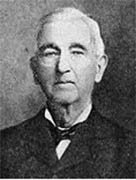Brain Freeze: The History of Ice Cream
 |
| What tastes better than knowledge? |
Everything has a beginning - and that's where historical investigation comes in!
 |
| 1930s picture of ice cream lovers - yes even your grandma does it! |
 |
| Marco Polo meets an oddly white Khubilai Khan in China - ice cream not pictured. |
We can still thank the Italian for giving the world ice cream. A steward to the rich and powerful, Antonio Latini (1642–1692), wrote down his recipe for sorbetto, or sorbet, the ice and sugar grandad to ice cream. He made the first milk-based sorbet, which culinary historians consider the first “official” ice cream, and gelato. (For more delicious details, see Jeri Quinzio's book Of Sugar and Snow: A History of Ice Cream Making.)
The idea spread to France, and they just had to one-up everyone:
"In 1768 there appeared in Paris what is undoubtedly the most outlandish treatise on the subject ever to be published. Called The Art of Making Frozen Desserts, it is a 240-page offering by one M. Emy, who not only gives formulas for "food fit for the gods," but offers theological and philosophical explanations for such phenomena as the freezing of water...Although frozen desserts were becoming common in regal circles, not until 1670 when the Cafe Procope opened in Paris did "iced creams" and sherbets spread to the masses."
---The Great American Ice Cream Book, Paul Dickson [Atheneum:New York] 1972 (p. 18-19)
 |
| The Victorians liked to put their ice cream in molds - not sure what the one on the bottom is supposed to be: A fish? |
And spread it did. Those fantastic people spread to England, then onto North America. In 1790, the first ice cream parlour opened in New York. But it was still hard to make, needing a great deal of ice from places like Canada and Norway, and not available to everyone. That changed in 1851 when Jacob Fussell, opened the first commercial ice cream plant in the world in America.
 |
| Thank you, Mr. Fusell. Bless you. |
"To make ice cream. Take two pewter basons, one larger than the other; the inward one must have a close cover, into which you are to put your cream, and mix it with raspberries, or whatever you like best, to give it a flavour and a colour. Sweeten it to your palate; then cover it close, and set it into the larger bason. Fill it with ice, and a handful of salt: let it stand in this ice three quarters of an hour, then uncover it, and stir the cream well together: cover it close again, and let is stand half an hour longer, after that turn it into your plate. These things are made at the pewterers."
---The Art of Cookery Made Plain & Easy, Hannah Glasse, facsimile of the first edition, 1747 [Prospect Books:Devon] 1995 (p. 168)
So enjoy your next ice cream scoop with the added sprinkles on top of knowledge. Mmmmm...crunchy knowledge.

No comments:
Post a Comment